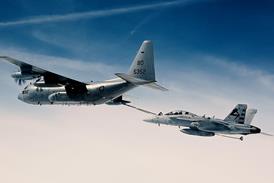Joint Winner: Luftfartsverket
Location Norrkoping, Sweden
Joint Winner: SAS
Location Stockholm, Sweden
Achievement Pioneering work within the NEAN project to demonstrate the potential of ADS-B to modernise Europe's overburdened air traffic control (ATC)infrastructure is already constraining air-transport growth in the region and a radical overhaul of the system is essential if forecasts of future growth are to have any chance of being met.
Most agree that the solution lies in some form of free flight, making use of an aircraft's own navigation capabilities and easing the reliance on an increasingly inadequate ground infrastructure.
One of the key technologies required to achieve the goal is automatic dependent surveillance-broadcast (ADS-B), a technique which will allow not only controllers but also pilots to know the location of nearby aircraft.
In pioneering work over the past year, Sweden's civil aviation authority the Luftfartsverket (LFV) and airline SAS have begun to demonstrate and evaluate ADS-B, taking the system into the air for the first time.
The trial represents the first phase of the North European ADS-B Network (NEAN) project, a three-year programme formed in December 1995 by the aviation authorities of Denmark, Germany, Sweden and the UK, together with SAS and Lufthansa, and backed by sponsorship from the European Union.
Under the lead of the LFV, a network of ground stations has been established across Germany, Denmark and Sweden, together with mobile units installed in commercial aircraft and airport vehicles. Essentially, the aircraft receives satellite-based position information from its global positioning system (GPS) receiver and broadcasts this once every one or two seconds via a VHF datalink. These position reports are then received by other aircraft and ground stations, which distribute the information around the whole network. The ground stations also provide a differential check on the GPS, to give positional accuracy of down to around 1m (3ft).
The system was tested for the first time in commercial-airliner service on 28 January aboard the first of two SAS Fokker F28s.
Earlier this year the whole ground network was connected up, making it possible to monitor aircraft gate-to-gate anywhere from north of Stockholm to south of Frankfurt. The pilot has equal access to this real-time data from his cockpit display, complete with moving map, navigation symbology and radar-like traffic data.
Since the first SAS flight, a total of nine commercial aircraft, including general-aviation types, have been equipped with the system, as well as 15 airport vehicles. There are plans for systems enhancements and to add another six aircraft as the project moves on during 1997. SAS is already working on using the system for commercial precision approaches into Stockholm.
The Awards judges were impressed by the important progress being made by the Nean project in demonstrating the potential for ADS-B to improve ATC coverage and increase pilot-situational awareness. The award is given jointly to LFVand SAS for taking the lead in the project.
Source: Flight International























